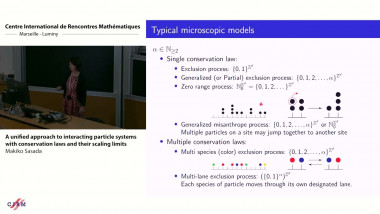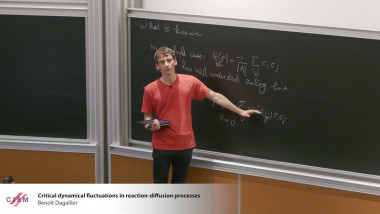
A unified approach to interacting particle systems with conservation laws and their scaling limits
De Makiko Sasada

Critical dynamical fluctuations in reaction-diffusion processes
De Benoît Dagallier
Apparaît dans la collection : Jean Morlet Chair 2021- Conference: Kinetic Equations: From Modeling Computation to Analysis / Chaire Jean-Morlet 2021 - Conférence : Equations cinétiques : Modélisation, Simulation et Analyse
We propose a modulated free energy which combines of the method previously developed by the speaker together with the modulated energy introduced by S. Serfaty. This modulated free energy may be understood as introducing appropriate weights in the relative entropy to cancel the more singular terms involving the divergence of the flow. This modulated free energy allows to treat singular interactions of gradient-flow type and allows potentials with large smooth part, small attractive singular part and large repulsive singular part. As an example, a full rigorous derivation (with quantitative estimates) of some chemotaxis models, such as Patlak-Keller Segel system in the subcritical regimes, is obtained. This is joint work with D. Bresch and Z. Wang.
